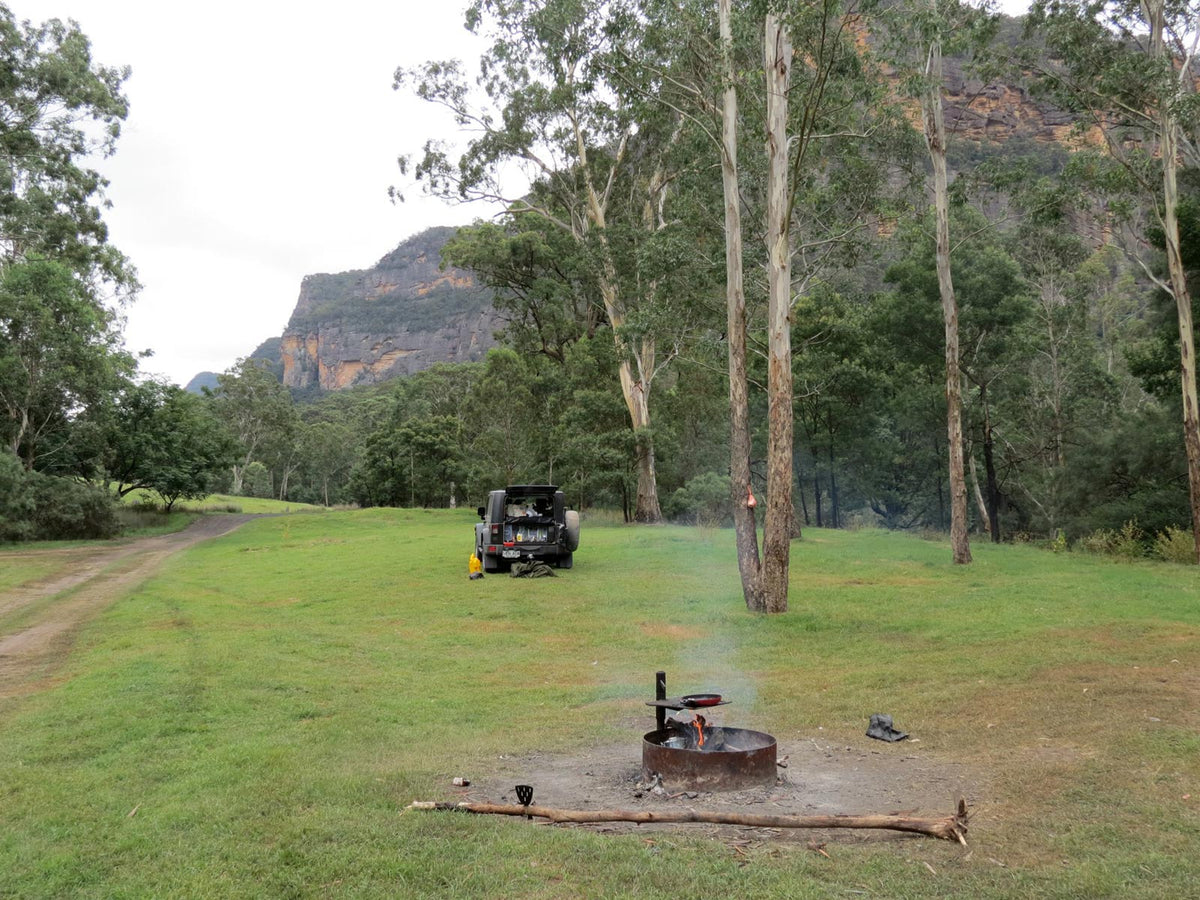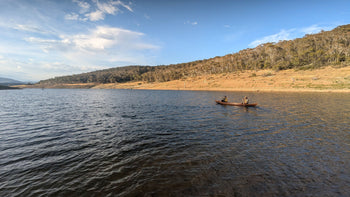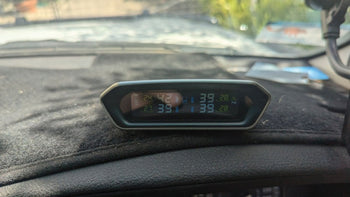

Solo camping provides a unique opportunity to connect with nature and oneself, offering solitude and a break from the hustle and bustle of everyday life.

Australia has more national parks than any other country. We have 11 times more national parks than the US. The only country with more land area classified as national parks is Canada. We Aussies are truly spoilt for choice.
Camping in national parks isn’t the only way for solo campers to tick many safety boxes, however it’s great for beginners due to the inherent security of a government-managed area and facilities such as toilets, water sources, shade, firepits and picnic tables. Plus, your campsite booking or trip intention form registration mean that others know where you are, and when. Share a copy of your itinerary with a trusted friend or family member.
Is Australia the safest country in the world for solo camping? Probably not. With no terrestrial snakes or deadly spiders (the katipō — whose closest relative is the Australian redback — has not caused any deaths for at least 100 years), New Zealand beats Australia for the title of ‘safest for solo campers’.
So, let’s just say that Australia is one of the safest countries for solo camping, but is not without its dangers. My most important safety tip for solo camping is to arrive at your campsite safely in the first place. If your solo journey starts to unravel on the highways and byways before you even arrive at camp, then it's odds-on that it will fall apart at the seams later. Whether you’re a seasoned solo camper or a novice adventurer, prioritising safety with solid preparation is the key to ensuring a safe and memorable experience.
Be prepared for any emergency. Make sure your spare tyre is in good condition and know how to change it. Top up your fuel frequently and check your wheel nuts and tyre pressures.
Don’t travel too late into the afternoon; many larger species of our native and feral fauna tend to enjoy travelling late in the afternoon too, so it’s safest to let them forage before their bedtime and be sure to have already set up camp well before yours. Be sure to pack waterproof matches, insect repellent, sunscreen, mozzie coils, medications, first aid and snake bite kits, fire extinguisher/s, plenty of water, reliable maps, non-perishable food, water purifiers, emergency and fire blankets, whistle, toolkit, shovel, axe, strong rubbish bags, tyre pressure gauge, air compressor, campsite lights/lanterns, snatch straps and shackles, recovery/traction boards, recovery gloves, a head torch with spare batteries and communication/navigation device/s. Communication is fundamental. Telstra rightfully claims that its 4G mobile network covers more than 99% of the Australian population. However, when it comes to the land area covered, the percentage changes markedly. Coverage of 2.7 million square kilometres may sound impressive if you are solo camping in Argentina (2.74 million square kilometres), but you’re not. You’re solo camping in Australia, where the 2.7 million square kilometres that is covered by Telstra 4G means that almost 5 million square kilometres is not. So, depending on where you will be travelling, we recommend that you consider carrying a satellite phone, and/or Personal Locator Beacon and/or a handheld UHF 2-way radio.
The Garmin inReach Mini 2 compact and lightweight satellite connector ticks a lot of safety boxes, with interactive SOS alerts, location tracking, digital compass, satellite network communication (two-way messaging) and weather updates.
Download the Emergency Plus app to your mobile phone. If you have signal, it will connect you to Triple Zero (000), State Emergency Service (132 500) or Police Assistance Line (131 444). Because it uses your phone’s organic GPS, it can tell emergency services where you are, even if you don’t know where you are. It’s important to note that if you do not have coverage from any mobile network, you won’t be able to call 000 via your mobile phone. This is another space in which the Garmin inReach Mini 2 or a satellite phone are indispensable.
Safety tips
- Know before you go — study maps, read reviews and familiarise yourself with the area’s wildlife and weather.
- Watch the weather — check weather forecasts through the BOM Weather App (Android | iPhone), prepare for sudden changes and have a plan. Ranger stations in national parks often display weather forecasts too.
- Be aware of your surroundings — don't park or pitch your tent or swag under eucalyptus trees, especially river red gum (Eucalyptus camaldulensis), spotted gum (Corymbia maculata) or lemon-scented gum (Corymbia citriodora). These species are notorious for ‘sudden branch drop’. Set up camp before last light and familiarise yourself with the area. Try to move around at night as little as possible, to avoid the risk of ankle injuries and tripping over.
- Be safe with fire — download the Fires Near Me Australia app (Android | iPhone), a great ‘go-to’ app for bushfire threats and other incident information displaying the Australian Warning System, with interactive maps and localised alerts. Check the Fire Danger Ratings, follow fire regulations (National Parks and Wildlife authority websites are an excellent information source) and never leave a fire unattended. Is it a hot and windy day? If in doubt, put it out. Or, better still, consider not lighting a campfire in the first place; about one-tenth of bushfires are caused by unsafe camping fires. Always ensure to have at least 10 litres of water (use non-potable water if available so that you aren’t dwindling your supply of drinking water) and extinguish fires completely (with water, not soil; ashes can reignite days later even if covered with soil) before leaving the campsite or going to sleep.
- Be safe with food — observe birds and animals from a distance and do not feed them. Store your food in containers, pack up leftovers and always clean up to avoid cross-contamination. Keep your drinks in a different ice box or fridge to where you keep your food cold so that you’ll be disturbing your perishables less frequently. Bacteria loves the danger zone between 4°C and 60°C, so ensure to keep hot food hot (above 60°C), keep cold foods cold (below 4°C) and cook your meals thoroughly, especially if they include poultry or seafood. Salmonella, campylobacter and listeria are not illnesses you want if you’re camping (solo or with company!).
- Be safe with water — bring an adequate supply with you or, if obtaining it from a natural source, treat it to remove parasites and bacteria.
- Don’t get lost! — with so much fantastic navigation technology available nowadays, we could be forgiven for not carrying paper maps and a compass that don’t need an app or a power source. A paper map and a reliable, durable, waterproof baseplate compass — with luminous dial and map-reading prism — could well be the difference between making it safely back home or … not.

- Leave no trace — carry all your rubbish out with you, including food scraps and non-biodegradable packaging. Double-bagging your rubbish and stowing it in your vehicle until you leave camp should ensure that it won’t be attractive to flies, bulldog ants and other nasties.
- Other tips — on narrow outback roads, slow down and pull over safely to allow oncoming road trains to pass. When sleeping or away from your campsite on foot or bike, lock your vehicle, caravan or camper trailer (including toolbox and pantry), secure your tent or swag (thieves aren’t always people; sometimes they are emus, wombats, dingoes or currawongs) and secure valuable large items (e.g. solar panels, generator, fridge) with locked chains.
Bring a portable analogue AM/FM radio with spare batteries. ABC Radio broadcasts updates during bushfires and weather emergencies. Before you head off, visit reception.abc.net.au/ to ascertain the local ABC AM radio frequency of the places you’ll be camping. Write them down on stickers and adhere them to your radio. Tune the relevant frequency to one of your car radio’s preset stations too.
Know that if you receive an SMS message from +61 444 444 444 about a bushfire, cyclone or flood emergency it is genuine, and you should act immediately. This number is the Emergency Alert national telephone warning system, and the message will be from fire, police and other emergency services. Something I learnt in the Australian Army is to place your socks over the collar and tongue of your boots when you go to bed. It prevents any spiders, bull ants or other creepy-crawlies from giving you a wake-up nip or sting on your feet the next day!

Special considerations for solo female campers
While solo camping can be a liberating experience for anyone, women may have additional concerns. Take extra precautions to enhance safety and peace of mind.
- Trust your instincts — if something feels off, trust your gut and leave the area. Be especially cautious if your vehicle is flagged down in a remote area. At camp, be wary of strangers who approach you and if you feel threatened, call the police if you have mobile coverage or if this isn’t practicable, pack up and leave.
- Join communities — connect with online forums, social media groups or local groups for solo female campers to share experiences and tips. Several Facebook groups have been set up with women caravanning, camping and travelling solo in Australia in mind.
Solo camping during an Australian road trip is a marvellous way to explore the natural beauty of this diverse country while at the same time leaving your comfort zone in your rearview mirror and experiencing the benefits of solitude. By prioritising safety and being well-prepared, you can ensure that your ‘alone time’ adventure is not only unforgettable when it comes to experiences, but also uneventful when it comes to incidents. Embrace the open road at your own pace, embrace the wild, trust in your abilities and embark on a journey that will leave you with cherished memories of quality time and a renewed sense of self.



